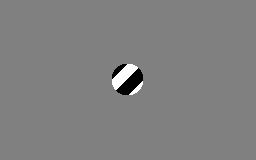Perception Movement (stroboscopic motion)
Motion perception is the
process of inferring the speed and direction of elements in a scene based on
visual, vestibular and proprioceptive inputs.

This is an example of
motion perception when the stripes are visually viewed as going diagonally down
toward the right, but can actually being going down or up we just can’t tell
till the ends of the lines are shown
https://en.wikipedia.org/wiki/Motion_perception
The phi phenomenon is
the optical illusion of perceiving a series of still images, when viewed in
rapid succession, as continuous motion. Max Wertheimer defined this phenomenon in 1912.
In this video example you
are shown multiple layering circles that form individual circles and gives the viewers the illusion that it is
moving in a spiral when in reality it is just linking.
Reversible Figures
Ambiguous images or reversible figures are optical illusion images which exploit graphical similarities and other properties of visual system interpretation between two or more distinct image forms. These are famous for inducing the phenomenon of multistable perception.
This example shown can be viewed as two different images,
one as rabbit and the other as a duck or bird,
and is an example of Reversible Figures
http://www.psy.ritsumei.ac.jp/~akitaoka/reversiblee.html

No comments:
Post a Comment